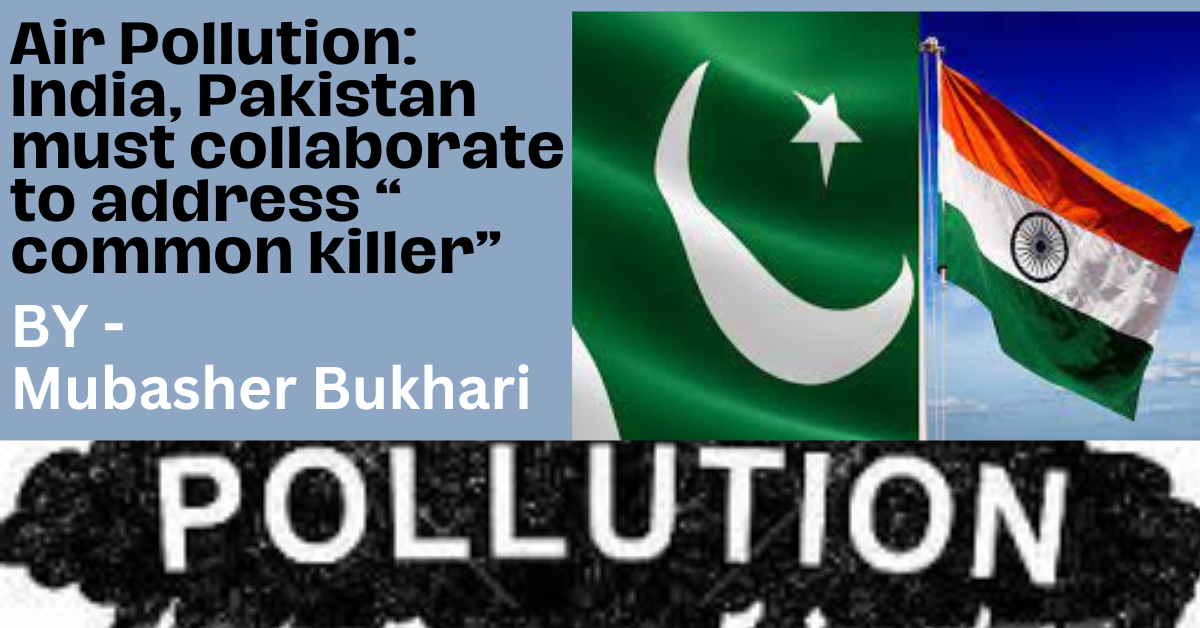Air Pollution: India, Pakistan must collaborate to address “common killer”
By Mubasher Bukhari
Pakistan and India need to work jointly to overcome the smog issue which not only poses serious health hazards to children and elderly people on the two sides but also pushes Lahore and Delhi to the top of the most polluted cities’ list especially in November every year. In November, farmers in India and Pakistan’s Punjab harvest their paddy crop and burn the stubble for the next crop of wheat. In India, this practice is exercised at a large scale in Amritsar and Haryana while in Pakistani Punjab, it is done in the districts famous for the paddy crops. The smoke of stubble burning contains toxic particles which make the smog extremely hazardous for human life. The two governments are struggling to overcome the issues; however, their coordination is necessary to overcome the problem.
Punjab Health Minister Dr Javed Akram told this scribe, “We have requested the federal government to take up the issue of stubble burning with the Indian Government as we have evolved policy in Pakistan’s Punjab against stubble burning and registered hundreds of cases against those, involved in this crime besides fining them.”
He said the Punjab government is also trying to introduce sweet seeding technology through which the farmers will be able to remove stubble and sow the seeds without burning them. “Since the technology is quite expensive, we are trying to work out an affordable plan.” In India, the government with the help of Tata Trust has introduced Happy Seeder technology which sows seed and removes the straw at the same time. The state government offers a 50% subsidy for individual farmers, while farmers’ groups and cooperatives can avail of a 75% subsidy.
Extreme cold dry weather in Lahore with a high level of smog is causing serious illness amongst infants, children and elderly people. A spokesman of the Punjab Health Department told the Peace for Asia forum, “Every year, hundreds of patients with pneumonia and pulmonary issues come to the public hospitals in Lahore during December and January. However, this year, the number of patients and casualties has increased.”
The spokesman said that the Health Department has started collecting data to verify if the number of patients with pneumonia, asthma and upper respiratory diseases has increased because of smog and other factors like dry spells. A few weeks ago, a US Air Quality Expert Dr Mike Bergin visited Lahore and this scribe had a chance to ask him a few questions about the solution to the smog problem. Dr Bergin was part of the team working in Beijing to control the smog. He said, “The immediate solution is to start producing air purifiers for domestic use locally.” He said that he was working with a group of the National University of Sciences and Technology (NUST) students in Islamabad to develop a low-cost purifier. “In Beijing, air purifiers played a key role in controlling pollution which means it can work in cities like Lahore and Delhi too.”
He said, “Los Angeles took 40 years to improve its air quality while Beijing took 10 to 15 years.” If Pakistan start taking measures to reduce traffic, completely stop stubble burning, control industrial emissions and discourage coal burning, it will need decades to improve its air quality therefore domestic use of air purifiers is the immediate solution for the citizens. Pakistan and India can work together to develop sweet seeding technology, control stubble burning and reduce industrial emissions in their provinces which may lead to a new chapter of cooperation between the neighbours.

